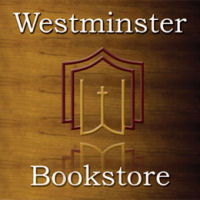Back in 1888 George Salmon, a mathematician and theologian, delivered a series of lectures at the University of Dublin. These lectures were later assembled into his book The Infallibility of the Church. Nick Batzig mentioned this book to me yesterday as a fantastic resource for looking at the history of the Papacy from a Protestant perspective.
You can appreciate Salmon's method by looking at the names of the different chapters:
THE CONTROVERSY WITH ROME
THE CARDINAL IMPORTANCE OF THE QUESTION OF INFALLIBILITY
THE ARGUMENT IN A CIRCLE
THE GRAMMAR OF ASSENT
MILKER'S AXIOMS. — PART I.
MILKER'S AXIOMS. — PART II.
THE CHURCH'S OFFICE OF TEACHING
THE CHURCH'S SOURCES OF PROOF
THE RULE OF FAITH
HERMENEUTICAL TRADITION
DOES THE CHURCH OF ROME BELIEVE IN HER OWN INFALLIBILITY
THE HESITATIONS OF THE INFALLIBLE GUIDE
MODERN REVELATIONS
THE BLUNDERS OF THE INFALLIBLE GUIDE
THE GALLICAN THEORY OF INFALLIBILITY
GENERAL COUNCILS. — PART I.
GENERAL COUNCILS. — PART II.
THE PREROGATIVES OF PETER
PETER'S ALLEGED ROMAN EPISCOPATE
THE INFANCY OF ROMAN SUPREMACY
THE PROGRESS OF ROMAN SUPREMACY
THE INFALLIBILITY OF THE POPE
THE POPE'S TEMPORAL POWER
After Nick mentioned the book to me, I immediately went to Amazon to find it and came up completely empty. Usually there is somebody selling a Kindle version of a book like this for a few bucks, but there was absolutely nothing. The book is (I should say, was) only available in olde thyme PDF format, however, and so I took it upon myself to create a very nice version of the book for the Kindle. It's currently up at Amazon for only $0.99. The best I can tell, there is not even a publisher who is carrying this book currently. It's pretty long, and I estimate in print it's somewhere around 400 pages. I also kept the footnotes and transliterated the languages into something that would display on the Kindle screen. On top of that, I created a working and active Table of Contents.
With all of the attention that has been given to Roman Catholicism lately, it is good for everyone to have a good historical overview of the Papacy. So if you're in the mood for a polemical, rigorously argued case against the infallibility of the Roman Church, this is your book. Even if I hadn't been the one to make this, I still would have written this post to tell you to get it, it's that good. Get it here.
PS: I've said this before, but you don't have the money for the book, just Facebook message me or email me, I'll give the eBook to you for free. I've started posting these books on Amazon for the cheapest price they allow because it actually has a much wider audience on Amazon than it does over here at our little niche blog.
Subscribe to:
Post Comments (Atom)




Adam, what program do you use for the OCR and can you give me any tips for the process of making a kindle book? I've got a couple I'd like to do that with.
ReplyDeleteI use ABBYY Finereader. Unfortunately, once I switched to Mac it became kind of a pain to run it in Parallels Desktop (the version I have is only on PC). Since then I've sort of chilled on making eBooks.
ReplyDeleteBut if you're a PC guy, I highly recommend ABBYY Finereader. Once you've gotten a good OCR of a book, just import into a stable text editing program and sort through it, read it slowly and edit it. Put paragraph breaks and page breaks where they belong. Lay it all out make it beautiful.
Once the books like I want it to look in terms of formatting, I bring it into MS Word. In word, I create bookmarks at each chapter and then I go to the Table of Contents and create a hyperlink to each respective bookmark. Once you're done making the TOC, just export to HTML and then bring into Calibre (an awesome program) and convert it to ePub or Mobi. I don't know if that sounded simple or not, but I do it so much now that it's just old habit.
Finereader looked good so I purchased it yesterday. I'd been manipulating text and then manually creating the html and then using Calibre but I've also been looking into Amazon's Kindlegen. I'm a Mac guy too but do have Windows in Fusion. Doing something in Word as you describe might be simpler than doing the html by hand. I'll look into that. Thanks!
ReplyDeleteShadow, one important thing about saving as HTML in Word... I don't know which version of Word you're using, but I'm in Word 2011. When you click "Save As HTML..." make sure you check the box that says "Save Only Display Information into HTML." If you don't, then your eBook will be a mess and won't be compatible with some e-Readers. Especially if you try to make an ePub that will be read on the iPad in iBooks.
ReplyDelete